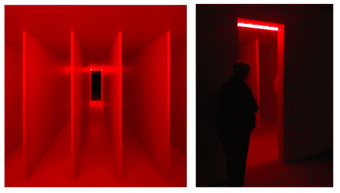Written by CIMA intern, Elisa Pellegrini
On April 2nd CIMA Members were invited to join us for a private tour of the exhibition Lucio Fontana: On the Threshold at The Met Breuer. Our tour was be led by Iria Candela, the Estrellita B. Brodsky Curator of Latin American Art in The Met’s Department of Modern and Contemporary Art who curated the show with the assistance of Aimé Iglesias Lukin, a Research Associate of the Department of Modern and Contemporary Art.
This exhibition reexamines the career of one of the most innovative artists of the twentieth century. The show explores the artistic career of the Argentine-Italian artist Lucio Fontana, widely known for his Cuts series, slashed paintings that became symbols of the postwar era. However, the exhibition explores also the artist’s beginning as a sculptor and, alongside the paintings, sculptures, and drawings on view, the Met has reconstructed three of Fontana’s late, immersive environments, providing a rare perspective on his pursuit of a spatial and technological art.
Lucio Fontana began his artistic career as a sculptor in Rosario, Argentina, working for his father’s business. In the mid-1920s his father’s company Fontana y Scarabelli produced sculptures for the local cemeteries of the city. Later, Lucio moved to Milan to study at the Brera Academy of Fine Arts, where he decided to take Adolfo Wildt’s classes and where he learnt to work marble. After completing his degree, he decided to focus on lighter materials, such as plaster, terracotta and ceramics. For him it was extremely important to model the material with his hands.
As for many artists at the beginning of their career, Fontana’s style was eclectic: he took inspiration from many different sculptors and painters, such as Medardo Rosso and Edgar Degas. This influence is visible in the similarity of Seated Young Lady with the Degas’ dancer sculpture.
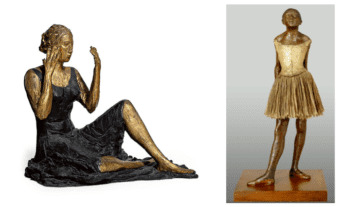
In the mid-1930s, fascinated by ancient Roman site excavations that were being conducted under the sea, Fontana created different sculptures working on the deformation of figures provoked by the natural erosion of water. The more agitated these distortions, the more abstract his forms became. As we can see from The warrior and Spatial Ceramic, he utilized different mediums at once: sculpture, ceramic and painting.
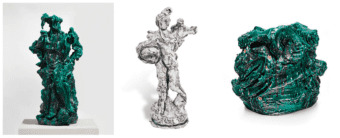
During World War II Fontana returned to Argentina. In 1946 he lived in Buenos Aires, where he helped establish the art school Altamira and came into contact with Madì and Arte Concreto-Invenciòn, avant-garde groups that initiated abstract art in the country. The artist also taught at the School of Fine Arts, where he cowrote the White Manifesto, encouraging his students to overcome the limitations of the canvas and to try visionary ideas like projecting lights in space. Later, in 1949, he came back to Milan and began to focus on his first works on canvas: the Holes series. He opened the pictorial surface to what lied beyond, letting light pass through the canvas.
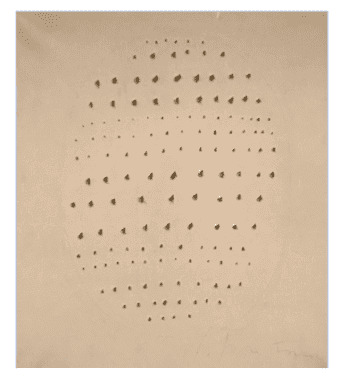
In the mid-1950s Fontana continued to work focusing on the activation of the painting surface and he started to apply reflective materials, such as glitter or glass fragments, to his perforated canvases. Large lumps of glass arrived from Murano to his studio in Milan, where the artist shattered them into smaller pieces. In these works Fontana exploited the specular qualities of glass to work on contingency, actively projecting the painting’s surface into the viewer’s space, putting all the elements of the space–: the light, the canvas and the viewer–in communication with each other.
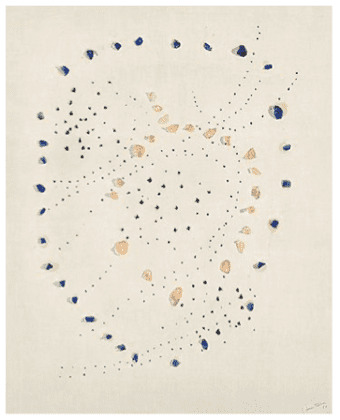
Fontana’s approach to painting was always sculptoral. In fact, in the 1962 Spatial Concept finger prints are visible: he used his hands to mold the thick layer of pink pigment and to create holes. In Spatial Concept, Nature he used his knees as well. He worked on paintings and sculptures in the same way, by using his body.
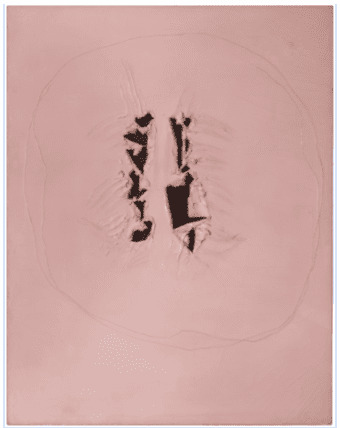
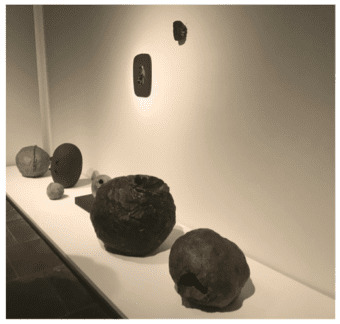
Amid the Italian economic boom, the space race, and the growing Cold War nuclear threat, Fontana created his most iconic artworks: the Cuts. This radical gesture was an act of sabotage to the discipline of painting. At the beginning, he tried to make the first cuts on paper. Later, he started a different procedure. The artist created monochromatic and uniform paintings, then shlashed them with a Stanley knife, while they were still wet. Once the paint dried, he modelled the opening directly with his hands, to obtain the shape he wanted. As a last step, he fixed the slash in place with a black piece of gauze adhered to the back of the canvas. Through cuts, Fontana was able to arrive at the space contained inside the painting, expanding outside the perimeter of it.
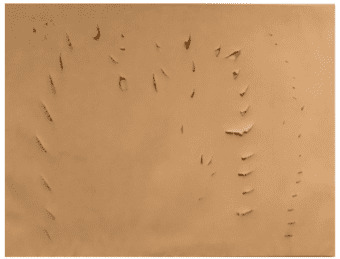
Originally Fontana cut canvases in a spontaneous, performative way, without a plan or a project, as is visible in the 1959 Spatial Concept. Later, as we can see from the 1967 Spatial Concept, the cuts became more controlled.
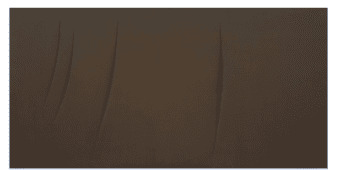
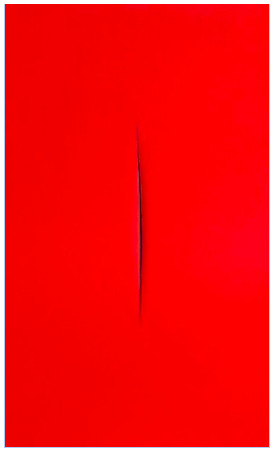
“They think it’s easy to make a cut or a hole,” said Fontana. “But it’s not true. You have no idea how much stuff I throw away. The idea has to be realized with precision”. From 1958 until his death in 1968, Fontana worked on the Cuts while receiving international acclaim. Over time, the slashes became straighter and more calculated. He began to create a language of cuts, representing them in groups or isolated; controlled, or in a more spontaneous way.
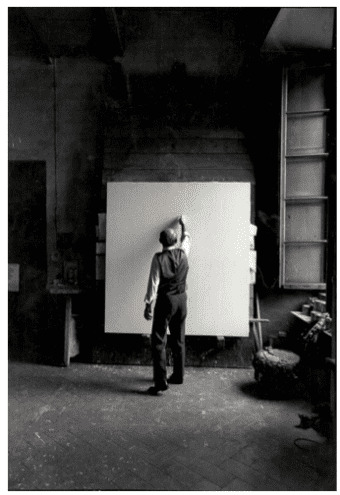
The slashed canvases negate pictorial conventions and the medium of painting itself, drawing attention to the immediate surroundings and the space that lies beyond the cut. These flat, monochrome white paintings function as reliefs or protuberances on the wall, suggesting a fusion of the two. Their restrained, impersonal style relates to Minimalism, and they create a sequence of slashes that reveals a sort of encrypted language of signs orchestrated through repeated patterns in a syncopated rhythm.
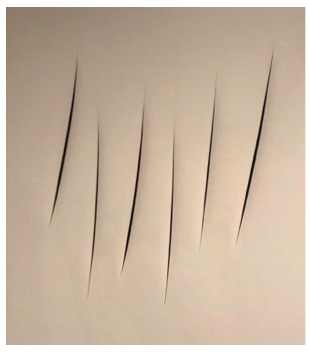
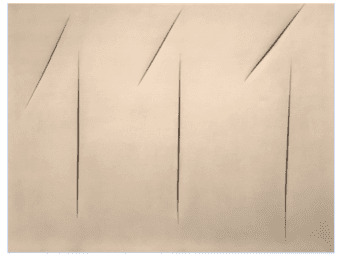
In 1961 Fontana had the chance to go to New York City for the first time for an exhibition at the Martha Jackson Gallery. Here he became fascinated by how the light and the sky were reflected in the skyscrapers. Consequently, he started to work with reflective materials and surfaces, such as copper, brass or aluminum. Direct light on these shiny surfaces rebounds toward the exterior, inundating the surrounding architecture. His aim was to activate the space that surrounded the work of art and to reflect viewers, making them an activate part of the art. Fontana was perfecting a sense of an enveloping, phenomenological experience in the relationship between the artwork and the viewer.
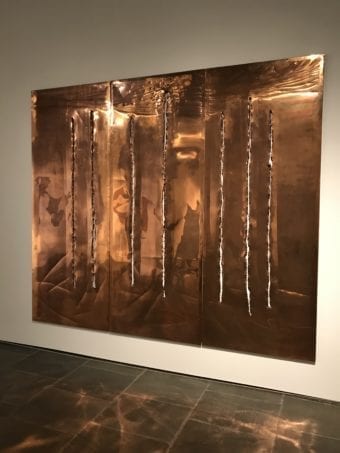
The tour ended with CIMA members experiencing two of the Spatial Environments created by Fontana. In these, Fontana’s use of lights, space and neon tubes can be experienced. The artist’s multidisciplinary approach broadened the notion of the art experience to embrace the space surrounding the viewer.
